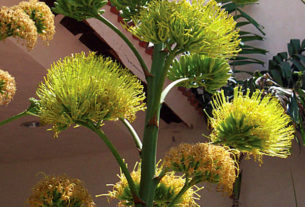As you drive the winding road into town, you catch glimpses of it perched like an eagle’s aerie on a ridge of the mountains that ring the valley. The small archaeological site, which overlooks Malinalco, is probably the best-preserved Aztec site in Mexico, but this charming town, set amid spectacular scenery has a lot more to offer visitors.
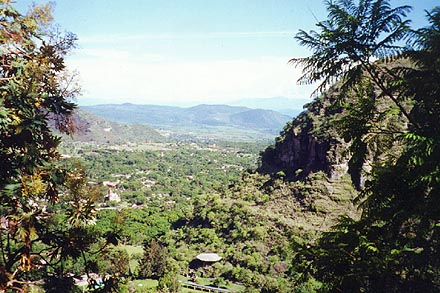
Situated about 80 miles (125 kilometers) southwest of Mexico City, the picturesque town of Malinalco has a year-round mild climate and rich history. One feels as if the town is slowly awakening from a languid sleep. Brightly painted old houses abut directly onto cobble stoned streets; laden donkeys still carry burdens through town; and horses are a common form of transport. Yet, there is a new golf club nearby; small hotels are springing up; and more foreign tourists are trickling in.
Each time I visit, I notice something new, which has opened in town. Art galleries, funky coffee shops, stores selling ethnic clothing all attest to the types of people who visit. The town is growing and is beginning to attract a community of artists. But I suggest you visit while it is still half awake.
Until recently, Malinalco has been somewhat cut-off from the mainstream and thus slow to develop. It was on the road to nowhere and that road was poor. Even now, highway 55 (from Toluca, through Chalma) is not an easy drive. Yet, it is a road paved with history.
Malinalco played a pivotal role in the destiny of the people we now call the Aztecs (but who called themselves Mexica). The wandering Mexica tribe was just one of a number of tribes, collectively called Aztecs, said to originate from the mythical land of Aztlan. Always a fractious people, they were in constant tribal quarrels. Even the gods had family quarrels. The Mexica’s supreme god, Huitzilopochtli (possibly once a great chief who was later deified) had a sister called Malinalxochitl. Legend has it that these two had a tremendous sibling argument. Malinalxochitl decamped with her followers and settled in a valley, founding the town of Malinalco.
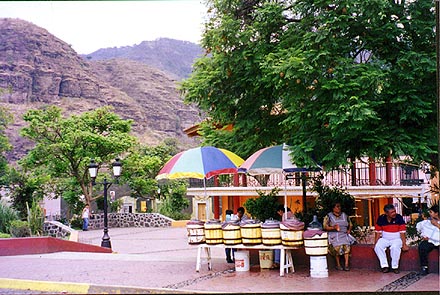
In time, the Mexica made attempts to settle in the valley that is now Mexico City but family feuds continued to seethe for generations. The story goes that the Malinalcan chief Copil, a descendent of Malinolxochitl, encouraged the city-states of the valley of Mexico to rid themselves of these bothersome, intrusive Mexica. At the time, the Mexica were settled around a hill called Chapultepec (grasshopper hill), which today is the park of the same name in Mexico City. After a mighty battle and against all odds, the Mexica won. Copil was killed in battle and in accordance with custom and religious beliefs, his heart was cut out. It was thrown across Lake Texcoco onto a small scrubby island.
(The unfortunate Copil is still remembered in Malinalco and a restaurant in town, on Calle Guerrero, bears his name. I must say, knowing how he met his fate I have not eaten there … yet. I wonder if they have braised heart on the menu!)
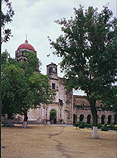
Years later, in 1325 after yet another fight with the city/state of Culhuacan the battle-weary Mexica, huddled in the swamps of lake Tezcoco prayed to their god Huitzilpochtli for guidance. He repeated his prophesy: that where they saw an eagle perched on a nopal cactus is where the heart of Copil lay and on this site the Mexica would found a city from which they would conquer the known universe. The next morning they spied the eagle on the cactus and immediately began erecting a small temple of reeds. The rest – as they say – is history and that temple eventually became the Teocalli or Templo Mayor, the ruins of which can be seen in downtown Mexico City today.
In a form of Mexica poetic justice, in 1476 the Malinalcans were taken back into the Aztec fold, as vassals after they were conquered by the Aztec emperor Axayacatl.
Around 1486, probably on the ascendancy of the Aztec leader Ahuizotl, work commenced on the site above Malinalco. It is believed that it was a centre of ritual activities for the jaguar and eagle orders of the Aztec military hierarchy. The region is dotted with caves and has a long history of religious beliefs associated with cave and earth deities, so the sanctuary we see today was possibly originally a small cave. Using slave labour and working with obsidian tools, the Aztec builders began to carve directly into the rock face. Thirteen steps, flanked by jaguar statues, lead to the entrance carved to resemble a mask of a serpent, whose forked tongue forms the welcoming “mat.” Inside the cave-like inner temple is a low, semi-circular bench with three “seats” for the military commanders: a jaguar and two eagles. Behind another eagle in the centre of the floor is a deep hole, to receive offerings to the earth. Blood sacrifice would have been a part of the rituals performed at the site.
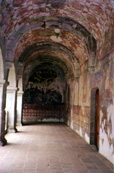
In Mexico today, most religious traditions are Catholic, layered over pre-Hispanic rituals. But in some quarters there is a revival of pagan beliefs. On more than one occasion I have witnessed a ceremony at the entrance of the temple, which was an invocation to pre-Christian gods, and drops of fresh blood are sometimes seen at the entrance.
The remains of other buildings dot the site. The temple complex was still under construction at the time of the conquest (1521) but was abandoned when the Tlahuica people of Cuanahuac (now Cuernavaca) accused the Malinalcan of attacking them. By then, the Tlahuica were the allies of Cortes, who sent soldiers to crush the rebels.
From the archeological site there is a spectacular view across the town to the valley and mountains beyond. Faint sounds waft up from the town below, which is dominated by the Augustinian monastery and church. Stones were taken from the Aztec site to build this church. The Augustinian friars arrived in this region in 1537. Work began on the church and monastery soon after, following the standard, single-nave plan used in early New Spain. It was built using a rich mixture of architectural styles including late gothic, renaissance and plateresque with Indian motifs.
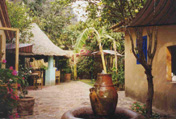
The restored frescoes inside the church, vestry, and cloisters are highly decorated with renaissance imagery. The large atrio is typical of 16th century Mexican churches.
Today, people laze and relax under the shade of its trees but the area was once used for mass baptisms during the period of the conversion of the Indians.
On August 6, 2000, the atrio was bursting with life, as the church held its annual festival. Bells tolled continuously for a couple of hours as volleys of fireworks shot up from the roof of the church. Amid all this din, four separate dance-groups performed in the corners of the atrio. Closest to the church, two dance troops re-enacted Aztec dances to the steady rhythm of drums and rattles. Some men wore elaborate feathered headdresses, some of which incorporated entire stuffed eagles. Representatives of various parishes carried banners and danced around in a circle. To the left, members of a Chinelo dance troop from Morelos, wearing their distinctive mask, hat and velvet gowns, were hip-hopping around in a circle. To the right a re-enactment of an ancient devil dance enthralled and horrified children, as young men dressed in drag or as demons chased others dressed as caricatures of political figures.
One could barely move in the Zocalo because of the crowd. Street stalls did a roaring trade and all the restaurants were full.
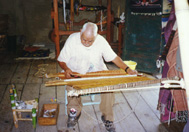
Las Palomas, situated in Calle Guerrero is my favorite restaurant. Among their specialties are a number of trout dishes, but I always go for the trout wrapped in Hoja Santa; an anise flavoured leaf. The kitchen staff handpicks the leaves from the plants behind the patio and bar area. This just has to be washed down with a fabulous Michelada (a sort of beer margarita). The owner, Hortensia de la Fuente also runs a small store selling preserves (fabulous pickled walnuts) and small artifacts.
Farther down the street, towards the Zocalo a small store sells hand-woven rebozas and clothing and while the weaver is at work on his back-strap loom (weekends only). And around the corner, opposite the Zocalo, a great little deli, Rosa de Harina, recently opened, selling good coffee and home made goodies. The small display of interesting groceries and bottles of wine are an indication of an increasing middle class clientele. It’s owned by Rosa Maria and both the deli and Rosa Maria are arty and friendly. Another favorite: Los Placeres, a restaurant on the Zocalo/Jardin Principal. It’s open only Friday, Saturday and Sunday; a good place for a drink or breakfast. From the back patio and garden you can see up to the archaeological site. The town is really small so you really can’t miss these places.
How to get there:
Second class buses leave for Malinalco from Toluca or from Terminal Poniente in Mexico City. No first class buses make the journey. Buses also go to Toluca from Cuernavaca. You can also reach Malinalco via a back road from Taxco, which passes by the beautiful Hacienda San Gabriel de Las Palmas, the caves of Cachuamilpa and the spectacular archaeological site of Xochicalco. From this road you can curve back towards Cuernavaca. The archaeological site is open daily (except Monday) from 10 until 5. There are over 400 steps from the entrance to the site, so one needs to be reasonably fit.

